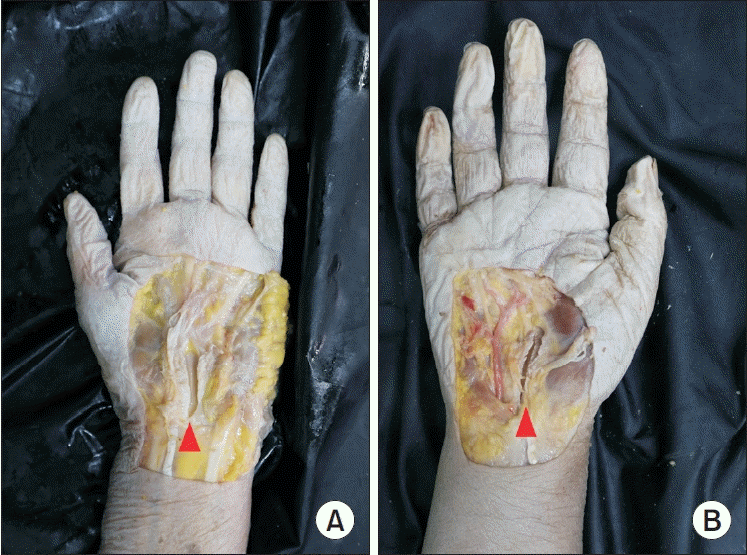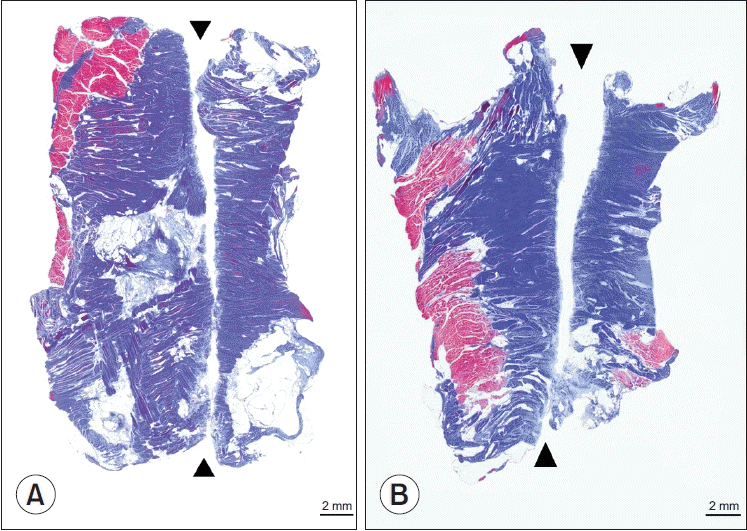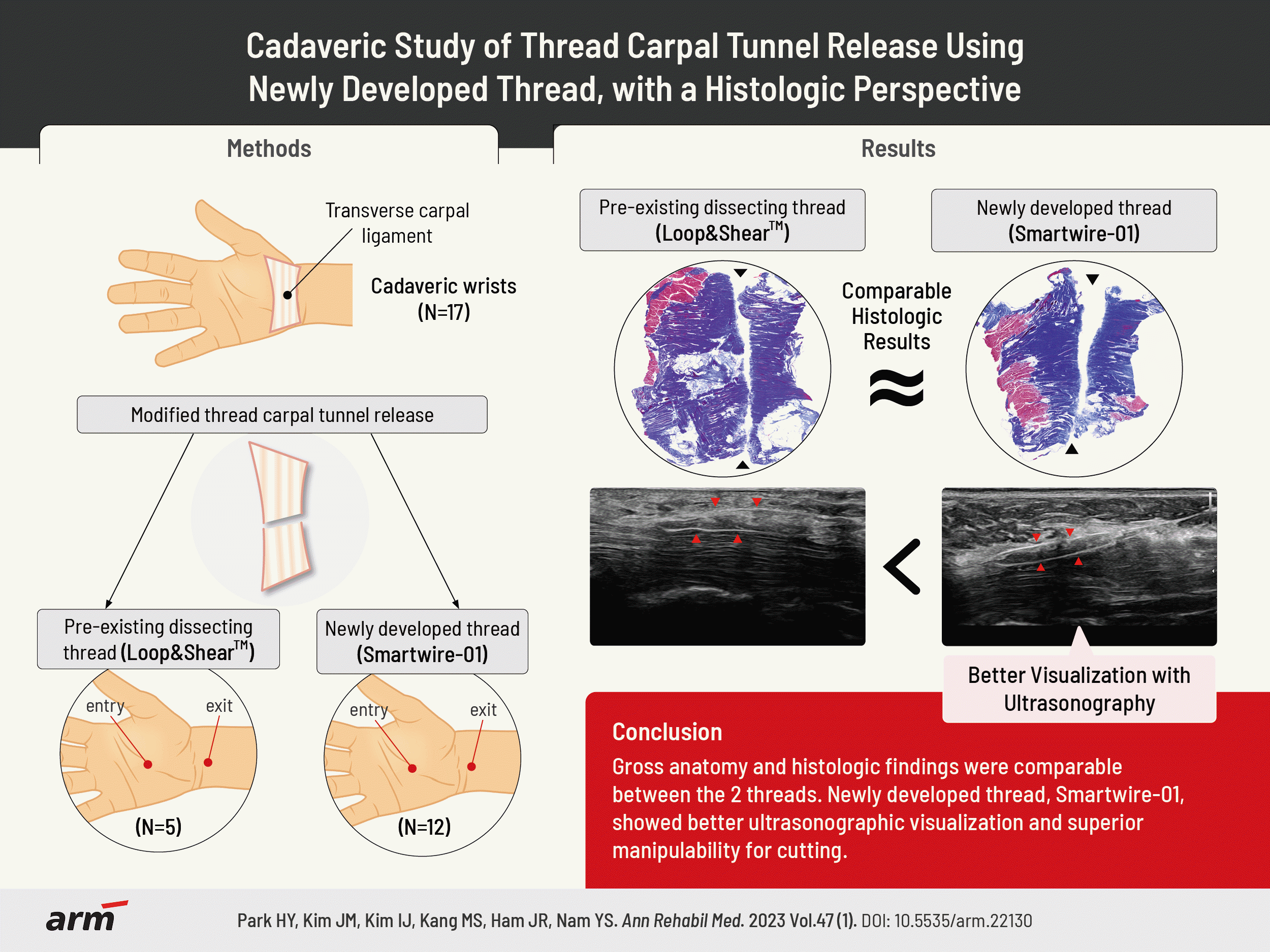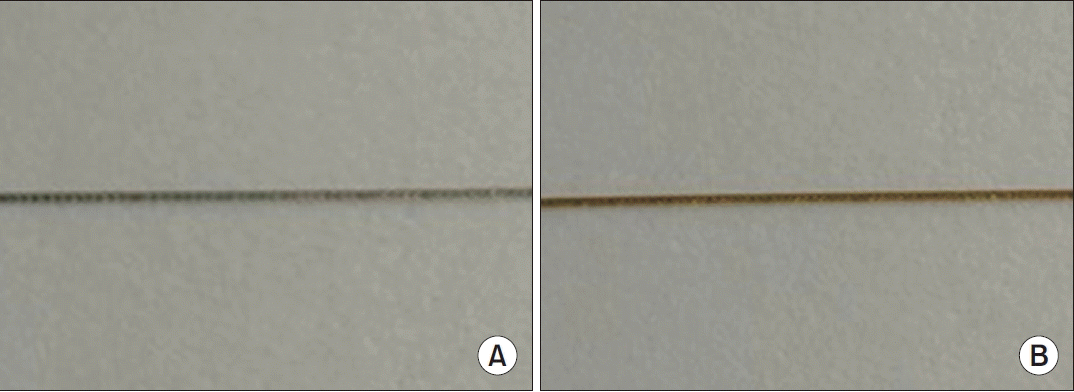1. Atroshi I, Gummesson C, Johnsson R, Ornstein E, Ranstam J, Rosén I. Prevalence of carpal tunnel syndrome in a general population. JAMA. 1999; 282:153–8.
2. Padua L, Coraci D, Erra C, Pazzaglia C, Paolasso I, Loreti C, et al. Carpal tunnel syndrome: clinical features, diagnosis, and management. Lancet Neurol. 2016; 15:1273–84.
3. Jeong YH, Choi JH, Choi HS, Kang S, Yang SN, Yoon JS. Risk assessment of injury to palmar cutaneous branch of the median nerve using high-resolution ultrasound. Ann Rehabil Med. 2019; 43:458–64.
4. Marshall S, Tardif G, Ashworth N. Local corticosteroid injection for carpal tunnel syndrome. Cochrane Database Syst Rev. 2007; (2):CD001554.
5. O’Connor D, Marshall S, Massy-Westropp N. Nonsurgical treatment (other than steroid injection) for carpal tunnel syndrome. Cochrane Database Syst Rev. 2003; 2003:CD003219.
6. Page MJ, Massy-Westropp N, O’Connor D, Pitt V. Splinting for carpal tunnel syndrome. Cochrane Database Syst Rev. 2012; 2012:CD010003.
7. Page MJ, O’Connor D, Pitt V, Massy-Westropp N. Therapeutic ultrasound for carpal tunnel syndrome. Cochrane Database Syst Rev. 2013; 2013:CD009601.
8. Kim DH, Cho BM, Oh SM, Park DS, Park SH. Delayed improvement after endoscopic carpal tunnel release. J Korean Neurosurg Soc. 2014; 56:390–4.
9. Li Y, Luo W, Wu G, Cui S, Zhang Z, Gu X. Open versus endoscopic carpal tunnel release: a systematic review and meta-analysis of randomized controlled trials. BMC Musculoskelet Disord. 2020; 21:272.
10. Guo D, Tang Y, Ji Y, Sun T, Guo J, Guo D. A non-scalpel technique for minimally invasive surgery: percutaneously looped thread transection of the transverse carpal ligament. Hand (N Y). 2015; 10:40–8.
11. Guo D, Guo D, Guo J, Schmidt SC, Lytie RM. A clinical study of the modified thread carpal tunnel release. Hand (N Y). 2017; 12:453–60.
12. Guo D, Guo D, Guo J, Malone DG, Wei N, McCool LC. A cadaveric study for the improvement of thread carpal tunnel release. J Hand Surg Am. 2016; 41:e351. –7.
13. Jones NF, Ahn HC, Eo S. Revision surgery for persistent and recurrent carpal tunnel syndrome and for failed carpal tunnel release. Plast Reconstr Surg. 2012; 129:683–92.
14. Jansen MC, Duraku LS, Hundepool CA, Power DM, Rajaratnam V, Selles RW, et al. Management of recurrent carpal tunnel syndrome: systematic review and meta-analysis. J Hand Surg Am. 2022; 47:388.e1–388.e19.
15. Kilinc F, Behmanesh B, Seifert V, Marquardt G. Does recurrence of carpal tunnel syndrome (CTS) after complete division of the transverse ligament really exist? J Clin Med. 2021; 10:4208.








 PDF
PDF Citation
Citation Print
Print





 XML Download
XML Download